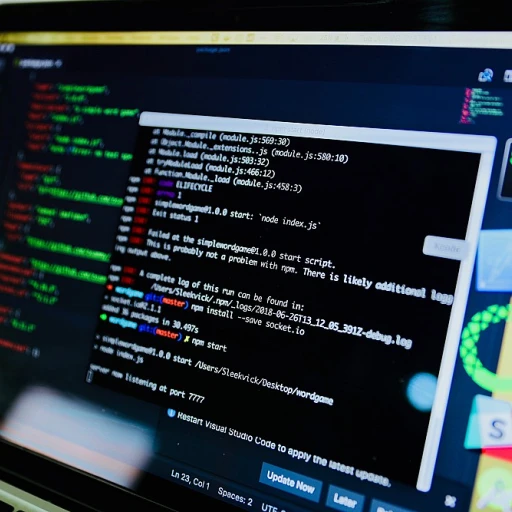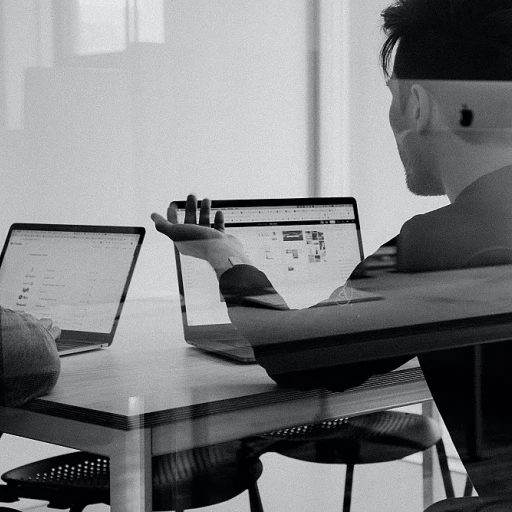
The basics of blockchain technology
Understanding the core principles
Blockchain technology is kinda like a digital ledger that keeps track of transactions in a decentralized and secure way. It's built on a chain of blocks, where each block contains a list of transactions. These blocks are linked together and secured using cryptographic principles.
What sets it apart
One of the most unique aspects of blockchain is that it operates on a decentralized network. Instead of a single central authority controlling the data, multiple nodes in the network validate and keep the record. This decentralization ensures that the data is tamper-proof and enhances trust among users.
How it works
Each block in the blockchain contains three main parts: the data, the hash, and the hash of the previous block. The hash acts as a unique identifier, kind of like a fingerprint, for each block. If any detail in the block is altered, the hash changes as well, alerting the network to potential tampering.
Types of blockchains
There are primarily three types of blockchains: public, private, and consortium chains. Public blockchains like Bitcoin and Ethereum are open to everyone and are highly decentralized. Private blockchains, on the other hand, are restricted and controlled by a single organization. Consortium blockchains are semi-decentralized and managed by a group of organizations.
Smart contracts
Smart contracts are self-executing contracts with the terms directly written into code. They automatically enforce and execute the agreed-upon terms when certain conditions are met. This functionality adds another layer of automation and trust to blockchain technology.
Why blockchain is a game-changer in software development
Why blockchain is revolutionizing coding
Blockchains are flipping the script on how we write software. Imagine having a coding buddy who keeps an unchangeable record of every tweak and adjustment you make. This is what blockchain offers—a decentralized, tamper-proof ledger that can track code changes, validate them, and keep everything secure. According to a 2022 report by Gartner, 60% of CIOs are actively testing blockchain, emphasizing its value and widespread acceptance (Gartner Press Release).
Enhanced security and trust
Traditional software can sometimes be like Swiss cheese—full of holes hackers can slip through. Blockchain aims to change all that. A study by IBM found that 71% of executives are convinced blockchain reduces risk by ensuring the validity of records and data (IBM Blockchain Study). With each transaction requiring multiple confirmations from various nodes, hacking becomes virtually impossible. It’s like trying to change the past: once it's on the blockchain, it's set in stone.
Decentralized apps (dApps)
dApps are another explosive area. They operate without a central authority—think of apps that run themselves, and you get the idea. The Ethereum platform, which powers over 90% of all dApps, allows developers to create apps that automatically execute code when certain conditions are met. This has led to a seismic shift in gaming, finance, and beyond.
Immutable records
Blockchain’s ability to create unchangeable records can streamline numerous software processes. Imagine never having to worry about a rollback-back version error again. Plus, the financial sector is loving it. As noted by Deloitte, 95% of banks and financial institutions see blockchain as a boon for maintaining accurate logs and preventing fraud (Deloitte Blockchain Report).
Faster transactions
Forget waiting days to confirm a software license transfer. With blockchain, transactions that used to take hours or days now get processed in seconds. This speed is especially vital in high-frequency trading financial applications, where every millisecond counts.
Case study: supply chain tracking
Walmart's use of blockchain to track its supply chain is a real game-changer. By recording each step a product takes from factory to shelf on the blockchain, Walmart ensures transparency and cleanliness in its food supply—critical for food safety. They’ve slashed the time it takes to trace produce from days to mere seconds, massively improving their operational efficiency.
Quote from an expert
“Blockchain is not just a new way of doing things, it’s a new mindset,” says Brian Behlendorf, Executive Director of Hyperledger. “It shifts us from a command-and-control mentality to one where trust, transparency, and efficiency become second nature.”
Real-world applications of blockchain in software
Digital identity verification and management
Blockchain's tamper-proof nature has revolutionized digital identity verification and management. Instead of relying on centralized databases that can be hacked, blockchain stores identity data securely and transparently. A study by IBM reveals that digital identity solutions using blockchain can reduce identity fraud by 90%. Companies like TrustID are already implementing blockchain to verify identities in real-time, bolstering security and efficiency.
Secure supply chain management
Transparency in the supply chain has always been a challenge. Enter blockchain. By creating a decentralized ledger, blockchain offers a transparent and immutable record of every transaction made in the supply chain. According to a report by Gartner, 50% of businesses will have invested in blockchain for tracking products by 2025. A notable example is IBM Food Trust, which uses blockchain to trace the journey of food products from farm to table, ensuring authenticity and quality.
Financial services and banking
Financial services have been early adopters of blockchain technology. From cross-border payments to trade finance, blockchain is making transactions faster, cheaper, and more transparent. The PWC Global Blockchain Survey found that 77% of financial institutions are likely to adopt blockchain for their operations. For instance, Ripple uses blockchain to facilitate instant cross-border payments, significantly cutting down on transaction times and fees.
Healthcare data management
Blockchain provides a secure and efficient way to manage healthcare data, ensuring patient information is accurate, accessible, and private. A report by Deloitte indicates that integrating blockchain in healthcare can save the industry up to $150 billion annually by 2025 through reduced data breaches and operational costs. MediLedger is a prime example, using blockchain to enhance the integrity and traceability of pharmaceutical supply chains.
Smart contracts and automated agreements
Smart contracts are self-executing contracts with the terms directly written into code. Blockchain's ability to enable smart contracts streamlines and automates various business processes. Grandview Research estimates that the global market for smart contracts will reach $345.4 million by 2026. Case in point, Chainlink's blockchain-based smart contracts ensure tamper-proof agreements across decentralized finance (DeFi) applications.
Expert insights on blockchain's potential
Voices in blockchain technology
When we talk about the potential of blockchain in software, we have to listen to the big names driving these innovations. Vitalik Buterin, the co-founder of Ethereum, often speaks about the significance of decentralized applications (DApps) in the future of software. He emphasizes their role in creating more transparent and fair systems.
Chris Dixon from Andreessen Horowitz is another vocal advocate. He asserts that blockchain technology could become as fundamental as the internet itself, reshaping how we think about data and trust. Dixon points out that the decentralization brought by blockchain not only mitigates risks of centralized failures but also empowers individuals and developers to innovate without imposed barriers.
Insights from industry pioneers
Many other experts have shared valuable insights. According to a report by Deloitte in 2021, around 53% of enterprises see blockchain as a critical priority. This highlights the growing recognition of blockchain's transformative power among industry leaders.
Anthony Pompliano, co-founder of Morgan Creek Digital, frequently mentions that blockchain introduces a new paradigm that could fundamentally change finance, healthcare, and software industries by creating systems where trust is distributed rather than centralized. In one of his talks, Pompliano stated, "Blockchain isn't just about digital currency—it's about a new architecture for software systems that prioritizes security and transparency."
IDC's recent study projected that global spending on blockchain solutions is expected to hit $11.7 billion by 2024, which is a testament to the bullish outlook many professionals have regarding blockchain's future in software development.
Quotes from software development experts
According to Don Tapscott, co-author of 'Blockchain Revolution,' "Blockchain technology has the potential to disrupt every industry… The biggest opportunity lies in transforming the architecture of the software industry." His analysis stretches across various fields, underlining blockchain's wide-reaching implications.
Esteban Ordano, one of the masterminds behind Decentraland, has shared that blockchain's decentralized nature is essential for creating new virtual worlds. He believes that these decentralized systems pave the way for more user-owned and governed software ecosystems, which he refers to as the 'internet of value.'
Case study: blockchain in supply chain software
Take IBM's collaboration with Walmart on a blockchain-based food traceability system as an example. Through this partnership, Walmart was able to reduce the time it takes to trace produce from seven days to just 2.2 seconds. This improvement showcases blockchain's potential in enhancing efficiency and transparency within supply chain software.
Another example is Maersk's Tradelens, a blockchain platform designed for global shipping logistics. Since its launch, it has managed millions of shipping events, providing a transparent ledger for all parties involved. This has not only eased complex logistics but also cut down costs significantly.
Trends and innovations in blockchain software solutions
Current trends taking shape in blockchain software
The blockchain arena keeps buzzing with some pretty exciting trends. To start with, decentralized finance (DeFi) systems have experienced an unprecedented rise. According to DeFi Pulse, a staggering $75 billion was locked in DeFi protocols by 2021, showcasing significant interest and investment in this area. These systems eliminate intermediaries, providing quicker, cheaper, and more transparent financial services.
Rise of NFTs in the blockchain world
Non-Fungible Tokens (NFTs) have shaken up the digital art and collectibles space. Take Beeple's piece, 'Everydays: The First 5000 Days,' which sold for an eye-popping $69 million at Christie's. These are unique digital assets that can represent ownership of rare or one-of-a-kind items. NFTs have broadened blockchain's horizon beyond just financial applications.
Green blockchain initiatives
Energy consumption has been a hot topic when it comes to blockchain, especially with cryptocurrencies like Bitcoin. According to the Cambridge Bitcoin Electricity Consumption Index, Bitcoin's annual energy consumption rivals that of some entire countries. However, the community is making strides towards greener solutions. Ethereum's shift from Proof-of-Work (PoW) to Proof-of-Stake (PoS) as part of the Ethereum 2.0 upgrade is a step in this direction, as it drastically reduces the network's energy consumption.
Supply chain innovations
Let's not overlook blockchain's role in revolutionizing supply chain management. IBM's Food Trust and Walmart's blockchain initiatives aim to enhance transparency and traceability of goods from farm to table. The result? Reduced fraud, improved safety and efficiency in tracking products, which is incredibly valuable in industries dealing with perishable goods or high-value items.
Interoperability improvements
Interoperability among different blockchain platforms is another trend that's gaining traction. Projects like Polkadot and Cosmos are pioneering 'internet of blockchains,' making it easier for various blockchain networks to communicate. This interoperability is crucial as it allows for a more interconnected, versatile, and scalable blockchain environment.
Expert insights on future trends
Experts are also chiming in on where blockchain software is headed. Don Tapscott, co-author of 'Blockchain Revolution,' believes that 'we're moving to the second era of the internet,' driven by blockchain technology. Similarly, Vitalik Buterin, co-founder of Ethereum, has spoken about the limitations of existing blockchain systems and the importance of scalability and privacy in future developments.
As we move forward, it's clear that innovations in blockchain software are not just hype—they're shaping the future of various industries with irreversible impact. Keep an eye out for these trends as they continue to evolve.
Challenges faced with implementing blockchain in software
Technical hurdles and compatibility issues
One of the primary challenges with implementing blockchain in software development stems from the technical complexities of integrating blockchain with existing systems. Unlike traditional databases, blockchains are inherently more complex and require specialized knowledge to implement effectively. According to a Global Blockchain Council report, 58% of organizations cited technical complexity as a major barrier to adoption.
Scalability concerns
Another major issue is scalability. Many early blockchain platforms struggle to handle a high number of transactions per second compared to traditional databases. For instance, Bitcoin manages around 7 transactions per second, while Visa processes about 1,700 transactions per second. Ethereum 2.0 promises improvements, but scalability remains a significant concern as of now. An Accenture study highlights that 64% of blockchain projects fail to scale past the pilot stage mainly due to these limitations.
Energy consumption
The energy consumption associated with blockchain, especially those using proof-of-work (PoW) consensus mechanisms, is another big challenge. Bitcoin's network, for instance, consumes more energy annually than some small countries. According to the Cambridge Centre for Alternative Finance, Bitcoin's annual electricity consumption as of 2021 was around 110 TWh (terawatt hours). This has raised concerns regarding the environmental impact of large-scale blockchain deployments.
Regulatory and compliance issues
On the regulatory front, different jurisdictions have varying regulations regarding blockchain and cryptocurrencies, making it difficult for developers to navigate legal landscapes. The General Data Protection Regulation (GDPR) in Europe, for example, poses constraints on the immutability feature of blockchains since it mandates the right to be forgotten.
Interoperability
Lastly, interoperability between different blockchain networks is still a work in progress. As blockchain technology evolves, creating standards that allow various blockchain systems to communicate seamlessly remains critical. Experts like Dr. Gavin Wood, co-founder of Ethereum and founder of Polkadot, are actively working on solutions to bridge these gaps, yet it's a tough nut to crack.
The future of blockchain in software development
Blockchain's role in shaping the future of software development
Blockchain technology, with its decentralized nature and unmatched transparency, stands poised to dramatically reshape the way software is conceived, developed, and executed. While the dispersed ledger ensures the authenticity and integrity of transactions, it goes beyond cryptocurrency, influencing various software development spheres.Decentralized applications (dApps)
Decentralized applications (dApps), running on blockchain networks, offer a glimpse into the future. Unlike traditional applications hosted on centralized servers, dApps operate on a peer-to-peer network, ensuring higher security and uptime. According to DappRadar, there was a 12% growth in daily active unique wallets interacting with dApps in 2021.Smart contracts and automation
Smart contracts, a significant innovation, allow automated, self-enforcing contracts without human intervention. These autonomous protocols ensure transactions are executed only when specific conditions are met, reducing fraud and boosting efficiency. A report by Gartner estimates that by 2023, smart contracts will facilitate over $300 billion in economic value.Enhancing cybersecurity
In the cybersecurity landscape, blockchain offers a robust framework for protecting against data breaches. With entities like Guardtime using blockchain to safeguard national data with success, the potential for reducing cyber threats is immense. IBM reports that employing blockchain in healthcare security could save up to $200 billion a year by 2025.Seamless integration and interoperability
Future software development will heavily rely on the interoperability provided by blockchain technology. Cross-chain protocols are emerging, allowing different blockchain networks to communicate and interact. This will enable seamless data sharing and transactions across various platforms, opening up new avenues for innovation and collaboration.Expert opinions
Industry leaders stand by the transformative potential of blockchain. Scott Stornetta, one of the pioneers of blockchain, emphasizes its role in revolutionizing not just financial sectors but any system that requires securing digital interactions. "The future of software is decentralized and blockchain is at the heart of it," Stornetta noted in a recent interview.Precision in data handling
Blockchain's precision in maintaining an immutable and transparent record of transactions will become a cornerstone in future software systems. This accuracy is essential for industries like supply chain management, healthcare, and finance, where data integrity is vital. Research from Deloitte suggests that 55% of enterprises recognize blockchain’s importance for enhancing traceability.Scaling blockchain technology
One of the anticipated advancements is the scalability of blockchain networks. With ongoing research and development in this area, protocols like Ethereum 2.0 aim to handle thousands of transactions per second. This capability will make blockchain technology more viable for mainstream software applications.Real-time case studies
Consider the case of De Beers, a major diamond company, utilizing blockchain to track diamonds from mine to retail. This real-time tracking prevents fraud and ensures consumers get authentic products. The implementation showcases blockchain’s practical applications in enforcing transparency and trust.Looking forward
As we advance, blockchain will undoubtedly continue to disrupt traditional software models, pushing us toward more secure, efficient, and transparent systems. While challenges remain, the concerted efforts in research and integration indicate a future where blockchain underpins the next generation of software development.Quotes on blockchain's future
To emphasize this shift, Vitalik Buterin, co-founder of Ethereum, stated, "Where blockchain provides the most value is where no single trusted entity really exists." This underscores the potential of blockchain in decentralized environments where trust is paramount.Sources:- DappRadar 2021 Yearly Report- Gartner's Forecast Report on Smart Contracts- IBM Blockchain Technology for Healthcare- Deloitte Blockchain Survey- Interview with Scott Stornetta- Research on Cross-chain ProtocolsGetting started with blockchain for software developers
Step-by-step guide to integrate blockchain in software development
Alright tech-savvy folks, let's get down to brass tacks. If you're jazzed about diving into blockchain for your next software project, you're in the right place. Here's a step-by-step guide to get you up and running.
Understand blockchain fundamentals
Before anything else, get yourself acquainted with the basics of blockchain. Know what makes it tick—distributed ledgers, cryptographic hashes, and consensus mechanisms. Courses on platforms like Coursera or Udemy can be a solid starting point. Refer back to our basics section if you need a refresher.
Choose the right blockchain platform
The platform you pick can make or break your project. Options abound—Ethereum, Hyperledger Fabric, Corda, and more. Each comes with its own set of pros and cons, so pick one that aligns with your project needs. According to a survey, 67% of blockchain developers prefer Ethereum for its smart contract capabilities. (Source: Deloitte)
Set up your environment
Next, you'll need to set up your development environment. Familiar tools like Truffle Suite for Ethereum can streamline this process. Install the necessary SDKs and dependencies. Make sure your system meets the hardware requirements specific to your chosen platform.
Coding smart contracts
Smart contracts are the heart of blockchain applications. Learn Solidity if you're using Ethereum, or Chaincode for Hyperledger Fabric. Write your contracts and test them locally before pushing to a live network. GitHub is rife with repositories that can serve as templates or inspiration.
Testing and debugging
This isn't the time to cut corners. Rigorous testing is crucial. Use test networks like Ethereum's Ropsten or Hyperledger's Fabric test network to debug and ensure everything works as expected. Automated testing frameworks like Hardhat can be a lifesaver here.
Deploying to the live network
Once you're confident your code is rock solid, it's go-time! Deploy your smart contracts to the mainnet. Popular wallets like MetaMask can help manage transactions and contract deployments.
Monitoring and maintenance
Your job doesn't end after deployment. Keep an eye on your smart contracts and the blockchain network. Tools like Etherscan can help you monitor contract activities. Regular updates and patches are essential to keep your application secure and efficient.
Continuous learning and staying updated
Blockchain is a fast-evolving field. Join communities, attend webinars, and keep up with the latest research and trends. Whitepapers from projects like Polkadot and Cardano can offer valuable insights into emerging tech and practices.
Jumping into blockchain tech isn't a cakewalk, but hey, nothing worth doing ever is. With the right steps and a bit of elbow grease, you'll be well on your way to spearheading the next big thing in software development.





